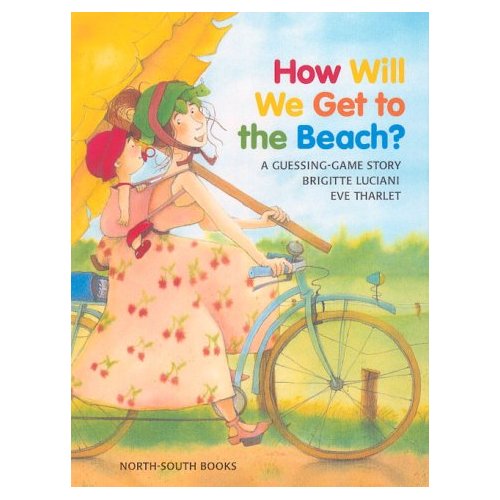This book by Eve Bunting is about a once little bear who grew too big for the boat he loved. He listened to his mama bear's advice and passed the boat along to another little bear.
Littles Bear's Little Boat makes for a great, simple read for young children. The author made the story line short and simple, therefore making it easy for early readers to follow along. Another perk this book had that adds to it simplistic reading is the author's strategy to only having one sentence on each page. Doing so makes it easy for the message of the book to flow easily. This book could open up a discussion with students as to what favorite objects of theirs they grow out of and possibly pass on to others. A silly art project could as well be incorporated into this discussion. Whatever objects the students chose, they could draw a picture of that object and then draw themselves being way to big for the object. This type of activity would have the students relating to little bear, and even bring about some giggles to the funny drawings made.
Suen, Anastasia. Subway. New York: Penguin Group, 2004. N. pag. Print.
Subway is about some of the crazy actions that happen throughout one's ride on the fun, colorful subway.
This book was full of coloful illustrations. The age group of children reading this book would definitely not turn a head away from all the shapes and colors that cover every page. Along with the illustrations that had character, the use of repetition of the verbs made the book a fun read. If this book were to be presented in the form of a read-along, students would get involved in the repeating of words because they know what to expect on the pages to come. To make this book even more interactive, when verbs are being said/repeated, the students could use their bodies to demonstrate how they would do this verb on the subway.
Luciana, Brigitte, and Eve Tharlet. How Will We Get to the Beach? New York: North-South Books, 2000. N. pag. Print.
This book is about a women who has five things she wants to bring to the beach, but is struggling to find a way to take all five items.
This book by Brigittes is an interavtive guessing-game story. This book really gets childrens' minds thinking and involving themselves into the book. The author gave scenrios in which children had to decide which item of Roxanne's would have to be left behind in order to get to the beach. For this book, the teacher could split the students into small groups have each student within the groups come up with some other modes of transportation that would require an item to be left behind. The studetns qould tehn share their ideas to the members in their group and have the others guess which item they think would not be able to be transported to the beach via the chosen mode of transportation.
Rockwell, Anne. Whoo! Whoo! Goes the Train. New York: HarperCollins Publishers, 2009. N. pag. Print.
Whoo! Whoo! Goes the Train is about a young boy who strongly loves trains and one day is taken on a memorable first train ride.
The illustrator of this book did a wonderful job with color, shapes, and overall pictures. From front to back cover, this book was emersed with eye-catching drawings. Because of the descriptive drawings of each scene written by the author, I believe an drawing activity could come about from this book. The young boy in this book goes passes/sees multiple things on his train ride. Each student could be assigned a site that this boy Allan sees on his train ride. In the end, to show comprehension and sequence of events from the book, each site drawn by the students would then have to be placed in order, ultimatley showing Allan's train ride.
Crew, Gary. Pig on the Titanic. New York: HarperCollinsPublishers, 2005. N. page. Print.
This book by Gary Crew is about a musical pig who soothes the fear of passengers on the Titanic.
Pig on the Titainc would most likely be a readin for some middle elementary grade readers. The amount of history and little fiction would not necessarily suit the demands for early childhood readeing. However, this book did spice up the story of the Titanic by adding in a musical pig to the mix. To draw discussion during this book reading, I would say the teacher could just have the students think to themselves, if put into this situation, what would they bring that could calm them and others down. And second, if that object could sing, what song would you chose for it. This little amount of discussion can help turn this "dry" book into a more involving read for the students; really get those creative juices flowing.









It’s great to come across a blog every once in a while that isn’t the same out of date rehashed material. Fantastic read!
ReplyDeletePositive kids books